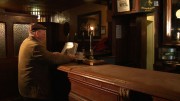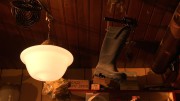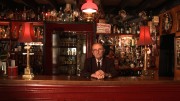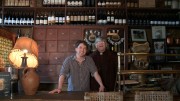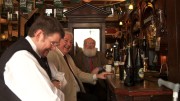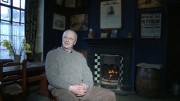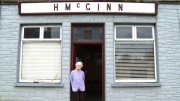James Curran of Curran’s pub, Dingle, opens the door to his pub. “We’ll start another day,” he chuckles. He points at a snug; “These were used for matchmaking,” he informs us. In McCarthy’s Bar, Castletownbere, Adrienne McCarthy states that after the match went ahead people celebrated “with a cup of tea”. In Brennan’s, Donegal, however, sisters Nan and Patricia Brennan say that their snug was for women, as “it wasn’t etiquette for a lady to stand at the bar.” In the Palace, Dublin, the snug was all about politics. In Fethard, it was about horse bets.
In THE IRISH PUB, we meander across Ireland from Connemara to Carlow, from Monaghan to West Cork, from Louth to Limerick, from conversation to captivating conversation. In O’Shaughnessy’s, Glin, we see a confession box standing in the middle of the pub. Paul Gartlan, Cavan, tells us an amusing anecdote about an American lady who complained there was no lock on the toilet door. “Well I never heard of anyone robbing a shite,” he replied to her with dead-pan earnestness. We frequent a random session in John B. Keane’s, Listowel, and eavesdrop on a conversation in Butterfields, Kildare. Eugene Kavanagh tells us a poignant ghost story in The Gravediggers, Glasnevin. Meanwhile, Michael Smyth performs a haunting piece of music on his grand piano in Smyth’s Pub, Newtown.
THE IRISH PUB is also a look at Ireland and who we are as a people. The history of Ireland, characters, song, music, anecdotes, politics, sport, religion, famine and the Irish sense of humour are all reflected upon. These pubs reach out not just to every Irish person today but to the Irish 50 years ago, 100 years ago and even as far back as 500 years ago and to the Diaspora abroad. The names over their doors are iconic. The stuff hanging on their walls is historic. However, the stories these pub owners tell are priceless.
